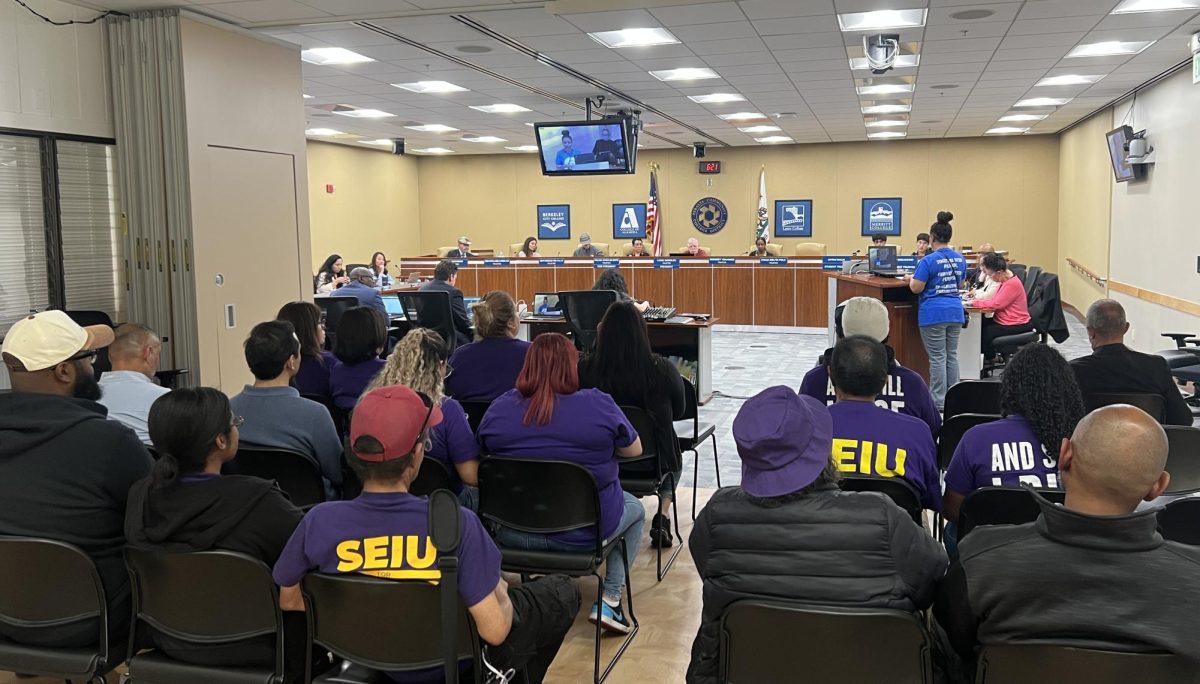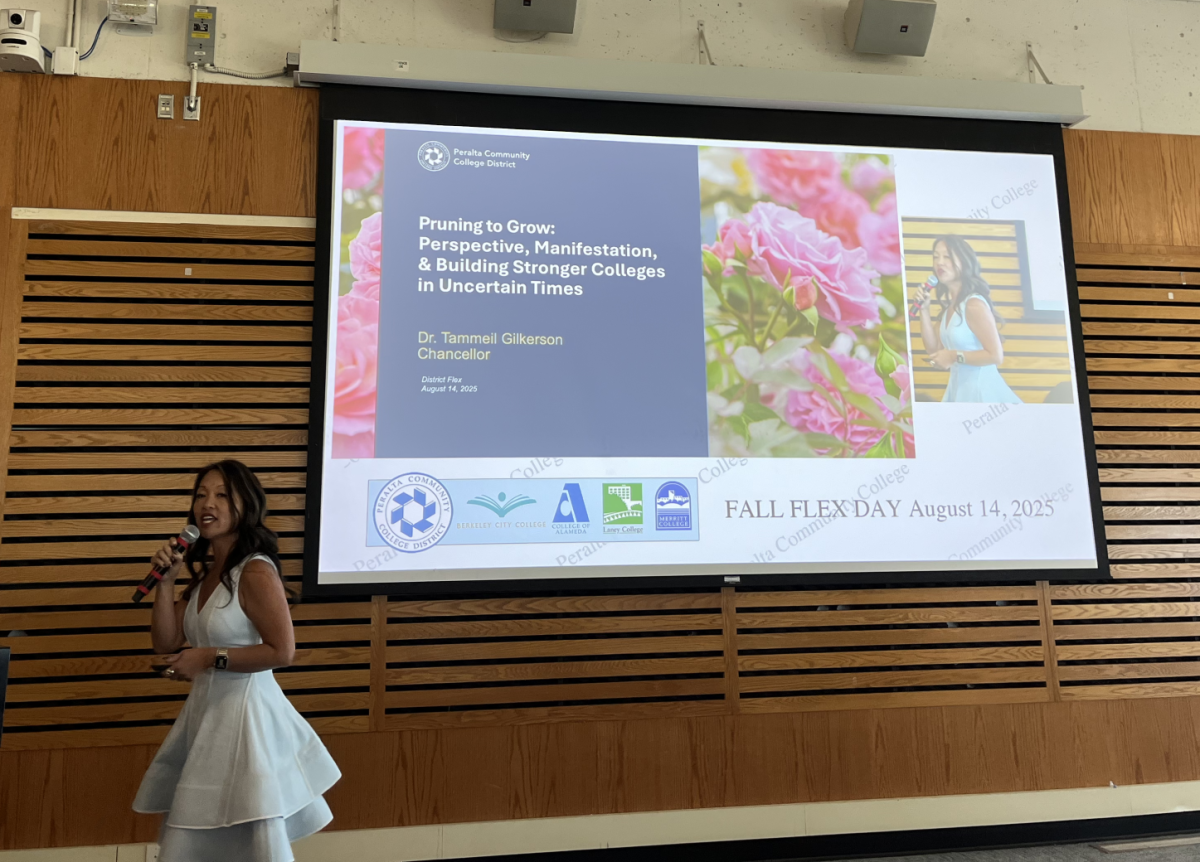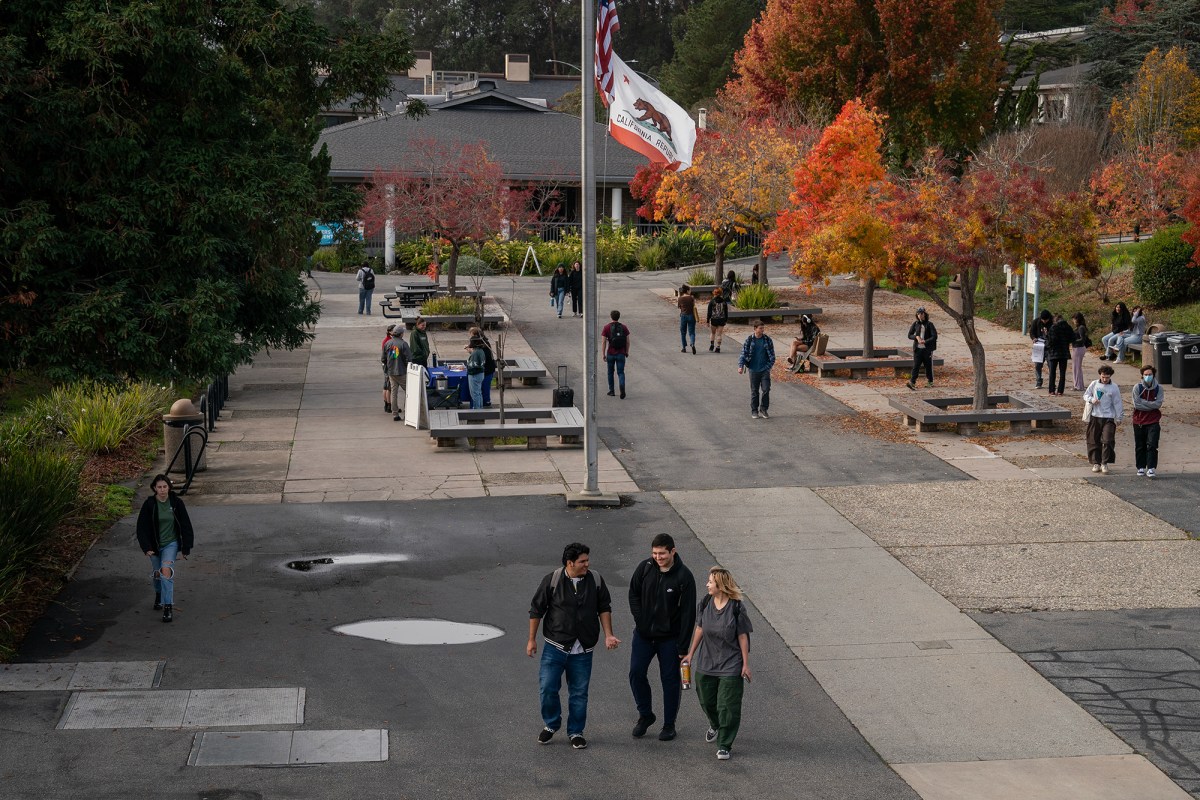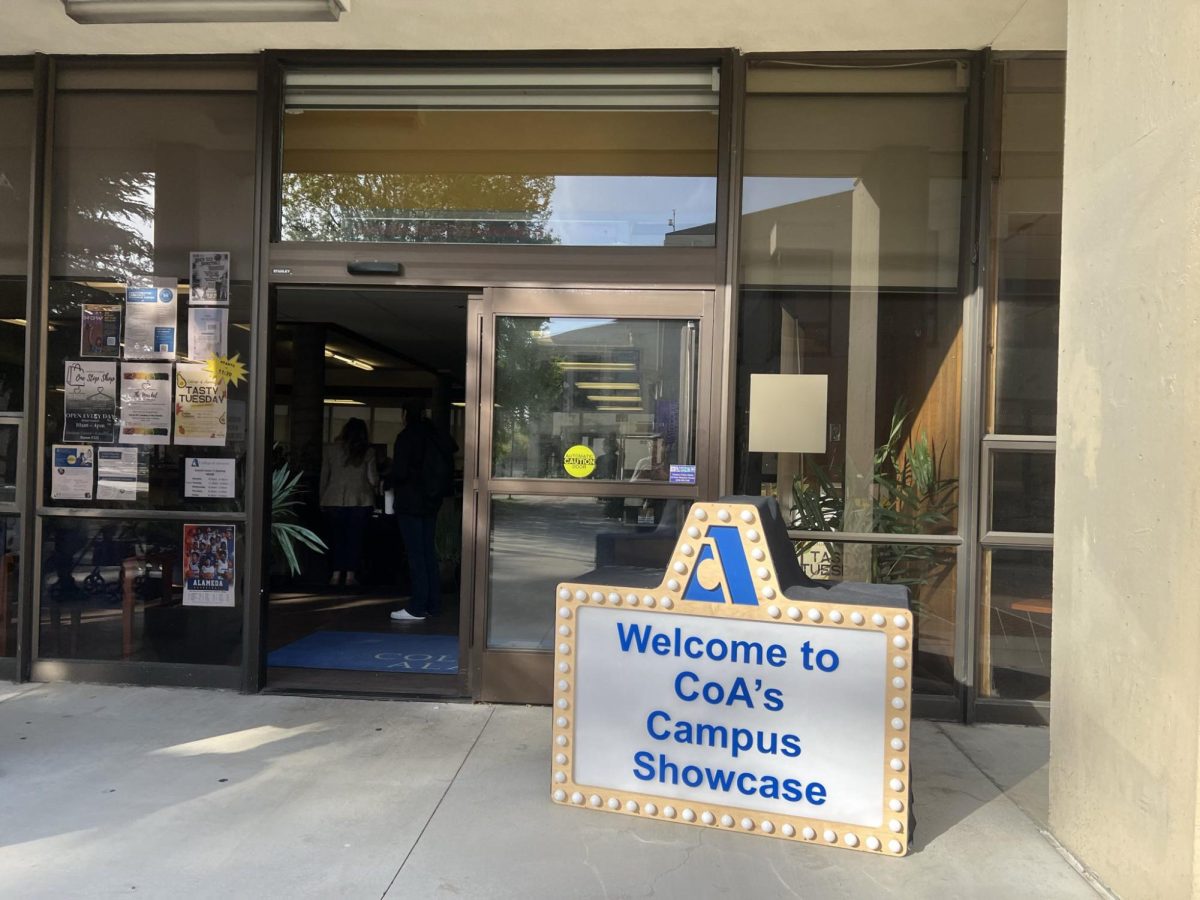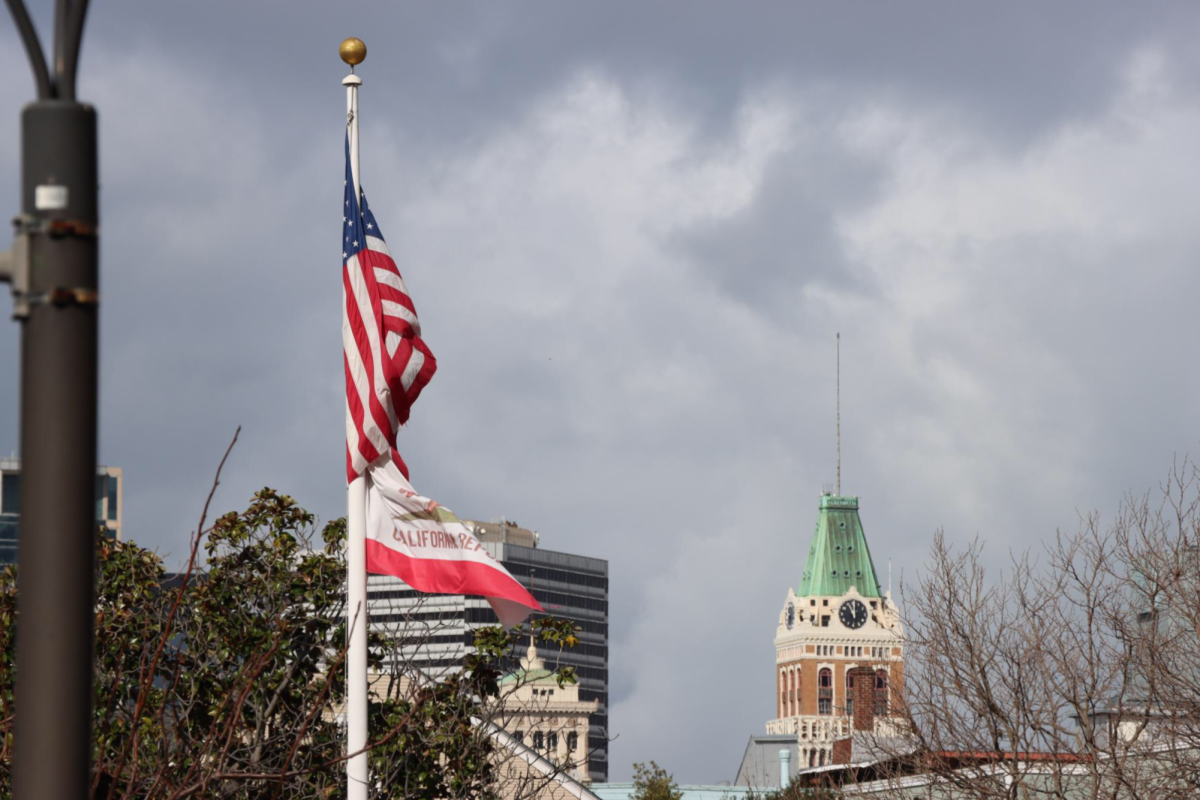Peralta district administration balloons
under Chancellor Jowel Laguerre

The headline above refers to a 2015 grand jury report produced by Solano County after their investigation of a Measure Q bond issue. The report investigated a campaign that promoted the bond measure and was run by Peralta Community College District Chancellor Jowel Laguerre, who was then Solano College’s president. The report determined that his campaign had violated state law by failing to identify needed projects and cost estimates before asking the voters for money. The report’s title was an ironic reference to a PowerPoint presentation produced by the campaign after the election, titled:
“We have our money, now what?”
Town hall illuminates chancellor’s history at Solano College
Peralta Community College District Chancellor Jowel Laguerre hosted a town hall at Laney College on Oct. 4, the first of four planned town halls.
A flyer sent out to the four colleges announced that he would give general updates on the District and answer questions from faculty and staff.
Laguerre gave a PowerPoint presentation with slides illustrating the structure of his newly reorganized administration. He introduced two of his new administrators, Vice Chancellor of Student Services Norma Ambriz-Galaviz and Assistant Vice Chancellor of Enrollment Management Tamika Brown.
He explained that the salary for the new Vice Chancellor of Workforce Development and Continuing Education (WCDE) Melvina King required no extra funding because he had eliminated the position of legal counsel.
He also said that this position would provide revenue and a financial security blanket for the district in hard times.
However, a fact check conducted on information he gave in town halls that followed on other campuses argues that the money saved by eliminating the in-house legal counsel is now being spent on outside counsel.
Also, there is no proof that WDCE would pay for itself or provide a financial cushion for hard times in the future, as this has not been the case in the past.
WARNINGS
At the end of the town hall, Laguerre showed four slides that appeared to be a warning against speaking negatively about his actions.
He blasted a Solano County grand jury report about his previous administration as a “hack job” and labeled the local news coverage of it as “half-truth reporting.”
Several of the slides from his presentation have been re-created on page 2 of this issue.
The first slide, at top-left, referred to his history as President-Superintendant of the Solano County Colleges. According to sources who spoke on condition of anonymity, the “Graveyard” was erected by Solano College faculty outside Laguerre’s office in response to the 14 programs canceled by his administration.
A headstone with a wry inscription represented each terminated program.
These included: “Football: Another Fumble 1945–2012,” “Here Lies German: Kaput,” “Nursing Degree? On Life Support,” “Here Lies Italian. Arrivederci R.I.P,” and “Here Lies Interior Design Degree: It’s Curtains R.I.P,” along with nine others, one of which is pictured at right.
Laguerre ordered the graveyard removed.
Laguerre did not elaborate on the Grand Jury’s findings or the graveyard. Instead, he provided three more slides admonishing his audience against negativity. These slides are also re-created below.
This warning may have been a preemptive attempt at damage control on the eve of another unflattering news story, Theodore Sorensens’s article in the East Bay Times on Oct. 10, 2016 about Laguerre’s contract with the Pennsylvaina-based Ferrilli firm.
The district has already paid that firm nearly $1 million for IT work at the PCCD, possibly violating the law in doing so. (Read the Tower’s coverage on page 3 for more.)
‘NOW WHAT?’
In Nov. 2012, a Solano County school bond measure, Proposition Q, passed overwhelmingly.
When the Grand Jury later investigated the district for election violations, it named its report: “We have your money, now what?” as an ironic takeoff on a PowerPoint presentation given to the Solano Board of Trustees at the first meeting after the election.
That talk was entitled “We have our money, now what?”
The PowerPoint title unwittingly highlights how the district violated election law under Proposition 39, which governs school bond issues.By law, the district must identify specific construction needs and draw up a Facilities Master Plan (FMP) which details the cost estimate for each project.
The money requested in the bond measure is supposed to be based on the figures in the FMP, which must be available to the public prior to the election so that voters can see for themselves where their tax dollars will be going if the bond measure passes.
The ballot pamphlet stated that the FMP was kept in Laguerre’s office but promised to make it available to the public.
But rather than draw up a Master Plan the administration had hired a political consultant, the Lew Group, to canvass the district and figure out how much money could be raised.
At the Aug. 1, 2012, meeting of the SCC (Solano County Colleges) Board of Trustees one member objected to going ahead with the bond proposal before the specific projects had been defined and cost estimates made.
However, the political consultant reported “a District bond of as much as $348 million is potentially viable in November 2012.” They recommended that the Board proceed with placing a bond measure on the Nov. 2012 ballot. The bond was $348 million, to be paid back over 40 years. 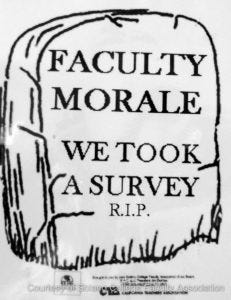
NO MASTER PLAN
When the Grand Jury interviewed the trustees, six of the seven said that they had been presented with “concepts,” draft FMP’s with no associated costs, and many power point presentations but “nothing at all with numbers.”
The seventh trustee said first that the required documents were there in President Laguerre’s office, and that he had seen them.
He later recanted his testimony.
A year after the election Laguerre had a letter published in the Vacaville Reporter.
He wrote,“SCC [Solano County Colleges] deliberately elected to not tie its hand with an exact list of Measure Q projects. Instead, we have taken the time to carefully research exactly how we will best spend your tax dollars and have kept in mind the potential for projects that were ‘on the horizon’ but not finalized as we worked to pass the bond.”
In July 2013, George Guynn of the Central Solano Citizens/Taxpayer Group requested the FMP and was told he would need to bring a check for $650 to pay for copying expenses — five hours of staff time and two hours of consultant time for the documents.
He responded by bringing his own copier to the district office and “they backed off,” he said. He was given documents to copy but the legally required FMP was not among them.The FMP was not completed until nearly two years after the bond election.
DECEPTIVE LANGUAGE
The Grand Jury found that the language of the Measure Q campaign literature was deliberately deceptive. It was saturated with emotionally charged “buzz words,” they said, such as veterans, disabled students and job training.
The title of Measure Q includes the words “Student/Veterans’ Affordable Education, Job training.” The Grand Jury held that this language was misleading to voters as none of the money could be used for these purposes.
By law the money raised by Measure Q can be used only for construction of new buildings, repairing or upgrading existing buildings or acquiring land.
None of it may be used to pay teachers or counselors or to fund the programs promised in the campaign literature.
THE TRUSTEES
The report concludes that the trustees did a lot of “rubber-stamping” of projects brought to them by the administration. “With Measure Q in particular the trustees really did not know what to do with the $348 million.”
The trustees seemed unaware that the law requires an FMP to be in place prior to the request for money.They seemed not to understand that the amount asked for was required by law to be based on good faith cost estimates of specific needs rather than whatever the market would bear.
In the online comments following the July 1, 2015 Fairfield Daily Republic article, a student member of the board wrote:
”Being a member of the Shared Governance Counsil, we asked the people who submitted the bond from legal stand point and was told that the bond could be written vague enough to do what they wanted.”
The same student wrote, “A survey was done in the community as to whether or not another bond would be supported ‘before’ it was submitted for the ballot measure.”
She seemed to think that this survey was done to comply with the law rather than to circumvent it.
The Grand Jury found that in some cases the medical benefits were motivation enough for board members to run for election and attend meetings.
GRAND JURY’S FINDINGS
The Grand Jury concluded that the Board of Trustees had neglected the public interest.They wrote, “What was available to the public at the time of the election did not meet [the required] criteria, so failed to comply with the law as set forth in Proposition 39.”
Although the Grand Jury found that there was no criminal activity by the Board or SCC employees they wrote:
“The loose manner in which the college conducts its business leaves it open to the potential appearance of misfeasance. A lack of engagement and oversight by the board of trustees, coupled with a cavalier attitude on the part of some of its members is an issue of great concern.”
The Grand Jury released its report at the end of June 2015, and the results were publicized in a July 1, 2015 Fairfield Daily Republic article. On July 9, 2015, President Laguerre resigned.
Six days later, he became Peralta’s chancellor.
Current gossip and half-truth reporting
— Grand jury of Solano County on bond measure
— Hack job for passing the highest bond election in over forty years. No rush for bonds here
— Graveyard at Solano: Yes! it happened and is a tactic of the faculty there
— response to negotiation
— response to impasse
— response to inflexibility of administrative team
— final impasse meeting- I intervened and held team until settlement
The Four Way Test
Of the things we think say and do
1. Is it the TRUTH?
2. Is it FAIR to all concerned?
3. Will it build GOODWILL and BETTER FRIENDSHIPS?
4. Will it be BENEFICIAL to all concerned?
Self-inflicting negative image
— Facebook post: “My employer is messed up.”
— Instagram: My Chancellor is doing us wrong
— Reporting dirty laundry to accreditation team
— Wishing colleges get on sanction
— Spreading misleading information
— Having students scared about what you may not be knowledgeable about
Image of Peralta
— You are Peralta
— I am Peralta
— Our students are Peralta
Belief in Peralta
— Belief in our students
— Belief in one another
— Fight negativity with what is right about Peralta administration and administrative actions
(SOURCE: town hall held on OCT. 4, 2016)

